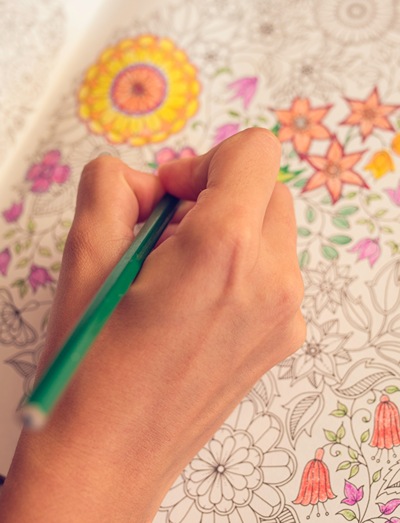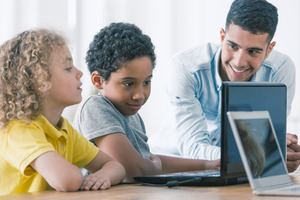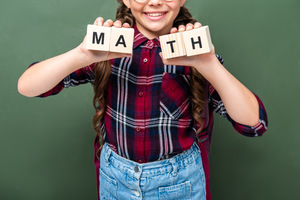Becoming a child actor can open up a world of exciting opportunities. Confidence and experience are key factors in achieving success in the acting industry. It’s important for children to find the right acting classes to develop their skills and build a strong foundation.
Parents play a crucial role in supporting their child’s dream of acting. They need to help find auditions and manage schedules. Ensuring that their child stays grounded and focused is important.
Agents and casting directors look for talent and personality. Building a resume with small roles, like school plays or local theater, can make a significant difference. Connecting with experienced industry professionals and joining acting networks can also be beneficial.
Getting Started as a Child Actor
Starting as a child actor involves building skills, getting a professional headshot, and finding the right classes and workshops. Each step helps in building a strong foundation in the acting industry.
Creating a Professional Headshot
A professional headshot is crucial for any aspiring child actor. It’s the first impression casting directors have. The headshot should be recent and look like the child. Simple backgrounds and natural light work best to highlight the child’s features.
Parents can hire a professional kids headshots photographer who specializes in headshots. It’s essential to keep the child’s appearance natural. Avoid excessive makeup or fancy clothing. The focus should be on the child’s face and expression.
A good headshot captures the child’s personality. Providing the photographer with a few different looks can be beneficial. Update the headshot every year or when the child’s appearance changes significantly. Having a great headshot increases the chances of getting noticed by agents and casting directors.
Developing Acting Skills
To become a successful child actor, it’s important to develop acting skills. Kids can start by joining school plays or local theater groups. Practicing lines from movies or plays at home can also help.
Parents should encourage reading a wide variety of scripts. Watching different genres of movies and TV shows can give children ideas on how to portray different characters. Practicing in front of a mirror helps identify facial expressions and body language.
Involving a coach can provide personalized feedback. This helps children understand their strengths and areas of improvement. Memorization techniques and voice exercises will also hone their skills. Regular practice builds confidence and improves performance during auditions.
Choosing Acting Classes and Workshops
Selecting the right acting classes and workshops is vital. These provide structured training and development. Parents should research local options and read reviews. Look for classes that offer specific training for child actors.
Classes should cover a range of skills including improvisation, scene study, and voice control. Some workshops also focus on audition techniques. Joining a respected workshop increases exposure and networking opportunities.
An acting coach or mentor can guide finding the right fit. Balancing class schedules with school and other activities is important. Continuous learning and practice are key to success in the acting field. By choosing the right classes, children can further develop their talents and enhance their chances of landing roles.
Understanding the Industry
To succeed as a child actor, it is important to grasp the roles of key players like casting directors, understand what to expect during auditions, and know the business aspects of the entertainment industry.
The Role of Casting Directors
Casting directors are crucial in finding the right talent for roles in movies, TV shows, and commercials. They review auditions, select actors for callbacks, and occasionally offer feedback. For a child actor, making a good impression on casting directors can lead to more opportunities.
They work closely with the director and producers to match the child’s abilities and look with the character’s needs. Knowing what casting directors expect can give a young actor an edge. Parents should also engage with casting directors to understand what they are looking for in child actors.
Navigating Auditions and Casting Calls
Auditions are a key part of a child actor’s career in entertainment. They involve reading lines, performing monologues, or improvising scenes. It’s a chance to show acting skills and personality. Casting calls, on the other hand, are open to a larger number of actors. These events might involve waiting in long lines for a brief performance.
It’s important for a child actor to be prepared for both, often requiring practice and comfort with rejection. Parents should provide emotional support and ensure their child adopts a positive mindset. Staying organized with schedules and knowing where to find casting calls helps a lot.
The Business Side of Child Acting
Acting is not just about performing; it’s also about managing a career. This includes understanding contracts, securing an agent, and handling finances. Agents help find roles and negotiate contracts, often taking a fee or percentage of earnings.
Parents and young actors must be aware of labor laws, such as work hour limits and schooling requirements. Understanding these aspects ensures a balanced life while pursuing acting. Being informed about the industry’s business side can protect the child actor’s interests and set up a sustainable career path.
Building a Professional Network
Networking is key for a child actor. Building relationships with agents, attending industry events, and using casting websites can open many doors.
Connecting with Agents and Talent Agencies
Agents can help a child actor find auditions and roles. Talent agencies represent actors and get them work.
Parents should research to find reputable agencies. Check reviews online and ask for recommendations. Once a potential agent is identified, email a short introduction and include headshots and a résumé.
Meeting with an agent or agency is crucial. This may mean attending an in-person interview or doing a formal audition. An agent’s role includes negotiating contracts and providing valuable advice.
Attending Industry Events and Workshops
Industry events are great for networking. These can be workshops, acting classes, or film festivals. For child actors, these events are chances to meet professionals, learn new skills, and get noticed.
Workshops often have guest speakers like directors or casting agents. Attendees can ask questions and make valuable contacts. Networking at these events means introducing oneself, exchanging contact information, and following up with contacts later.
Events often provide hands-on experiences. A child actor might participate in improv exercises or scene readings. These workshops build confidence and acting skills.
Leveraging Casting Websites and Social Media
Casting websites and social media can significantly aid a child actor’s career. Websites like Backstage and Casting Networks list casting calls. Parents can create and maintain a profile with headshots, videos, and résumés.
Being active on social media is also important. Platforms like Instagram and Twitter help connect with industry professionals. Posting regularly about acting experiences can attract attention from casting directors and agents.
Parents should monitor these accounts to ensure all interactions remain professional and appropriate for a child. Social media also offers the chance to network with other actors and industry insiders.
Creating an Effective Portfolio
To become a child actor, it’s crucial to present a polished portfolio. This includes an acting resume, headshots, sample monologues, and a demo reel. Each element should showcase the child’s talent and professionalism.
Crafting an Acting Resume
An acting resume should list the child’s experience, training, and skills. Start with personal information: name, contact info, and age.
Next, include acting experience. This can feature roles in school plays, local theater, or small parts in films.
Training is essential. List classes, workshops, and coaching sessions.
Include any special skills like singing, dancing, or sports. This gives casting directors an idea of the child’s range and versatility.
Selecting Monologues for Auditions
Choose monologues that highlight the child’s strengths. Monologues should be age-appropriate and reflect the child’s personality.
Consider various styles: comedic, dramatic, and classical.
Practice is key. The child should know the monologue by heart and be able to perform it with confidence and emotion.
It’s also helpful to have a couple of monologues prepared to show versatility.
Producing a Demo Reel
The demo reel should be a collection of the child’s best on-camera work. Include scenes from short films, TV shows, or student projects.
Keep it brief. A two-minute demo reel is sufficient to showcase talent.
Use high-quality professional footage. Poor quality can distract from the performance.
Organize the clips logically, starting with the most impressive. Add the child’s name and contact information at the beginning and end.
By following these steps, a child actor can create an effective portfolio that grabs attention and secures auditions.
Mastering the Audition Process
Becoming a child actor requires understanding and mastering auditions. It involves preparing well, creating self-tapes, and handling casting calls with confidence.
Preparing for Auditions
Preparation is crucial. Memorization of lines is the first step. They should practice their monologue until it feels natural. Rehearsing with a coach or in front of family helps build confidence.
Wardrobe matters too. Choosing simple, clean clothes that fit well can make a good impression. Bringing a cover letter and a headshot is also important. The letter should include the child’s name, age, and contact information.
Before the audition, they should get enough rest and eat a light meal. This helps keep energy levels high and nerves in check.
Understanding Self-Tapes
Self-tapes are videos sent to casting directors. They need to be high quality. Using a neutral background and good lighting ensures the video is clear. The camera should be at eye level to capture the actor’s expressions well.
Starting with a short introduction is key. The child should state their name, age, and role they’re auditioning for. Performing the given script or preparing a short monologue shows their skills.
When filming, using a tripod keeps the camera steady. Keeping the tape short and focused makes it effective. Review and edit the self-tape to remove any mistakes or unnecessary parts.
Handling Casting Calls
Casting calls are face-to-face auditions. Arriving early shows professionalism. Bringing a printed copy of the cover letter and headshot ensures they are prepared.
During the audition, they should listen to directions carefully. Following instructions demonstrates attentiveness and respect. Making eye contact with the casting director can create a strong connection.
If asked to perform a cold read, they should stay calm and read the script clearly. Showing flexibility and a willingness to try different directions can impress the casting team.
After the audition, sending a thank-you note can make a lasting impression. It shows gratitude and keeps the child’s name fresh in the casting director’s mind.
Legal and Logistical Considerations
Child actors face unique legal and logistical challenges. Families need to secure proper documentation, manage finances, and create a supportive environment for their child actor.
Obtaining Work Permits and Legal Documents
Parents must secure a work permit for their child. This legal requirement ensures that the child can work in the entertainment industry.
States have different laws, so parents should check local regulations.
Contracts must be reviewed carefully to ensure the child’s rights are protected. Hiring an entertainment lawyer can help families navigate these complexities.
Managing Finances and Expenses
Child acting involves various expenses, such as acting classes, travel, and headshots.
Parents need to plan a budget to cover these costs. Additionally, earnings from acting jobs should be managed properly. Setting up a Coogan account, a trust fund required by some states, can protect a portion of the child’s earnings for their future.
Ensuring a Supportive Environment
A strong support system is essential for a child actor. Parents play a critical role in providing emotional and logistical support. Balancing auditions, school, and acting work requires careful planning.
Maintaining educational requirements is also crucial. Tutors or on-set teachers can assist with keeping up with schoolwork. Parents should monitor their child’s well-being and ensure they are not overwhelmed.
Cultivating a Sustainable Career
Pursuing a lasting career as a child actor requires dedication to continuous learning, dealing with rejection, and balancing acting with education.
Focusing on Continuous Learning
- Child actors should always strive to improve their skills. Regular training can help them adapt to different roles.
- Taking acting classes, participating in workshops, and working with acting coaches are all beneficial.
- Reading scripts and practicing different scenarios can help in developing a deeper understanding of characters.
- Staying updated with industry trends improves versatility. It prepares young actors for various opportunities.
- Persistence is crucial. Continuous improvement can lead to more significant roles and a sustainable career.
Dealing with Rejection and Setbacks
- Rejection is a common part of an acting career. Handling it well is essential.
- It helps to see each audition or role not just as a chance for a job, but also as a learning experience.
- Support from family and friends can provide comfort and encouragement during tough times.
- Developing a positive mindset and persistence can help young actors move forward after setbacks.
- Learning from feedback and using it to improve can turn rejections into valuable lessons.
Balancing Acting with Education
- Education should not be neglected, even for a budding actor.
- Balancing schoolwork and acting commitments requires careful planning and time management.
- Many young actors use tutors or online schooling options to keep up with their studies.
- A strong educational foundation opens up options beyond acting.
- It’s important to have a backup plan. Not every acting career lasts, so keeping up with school ensures opportunities for the future.
Regional Considerations for Child Actors
Child actors can start their journey through local theaters, different markets in L.A. and New York, and school plays. Each path offers unique opportunities and experiences.
Making a Mark in Local Theaters
Local theaters provide a great stepping stone for child actors. It’s often easier to get roles in these productions since they have smaller casts and less competition than large city venues. Kids can get experience, build confidence, and learn how to perform in front of an audience.
Performing in local theaters also helps children understand stage directions, timing, and collaboration with other actors. Parents should research nearby theaters and see if they offer classes or workshops for young actors. These can help enhance a child’s acting skills.
Local theaters are usually more supportive environments, which can boost a child’s morale. Being a part of a local theater community can make the start of an acting career feel less daunting and more manageable.
Understanding the Differences between L.A. and New York Markets
L.A. is known for its film and television industry, while New York is famous for Broadway and theater. The L.A. market is highly competitive, with numerous talent agencies and casting calls. Child actors in L.A. might find more opportunities in commercials, TV shows, and movies.
In New York, the focus is on stage performances. Young actors can audition for Broadway and off-Broadway shows, as well as regional theater productions. Each market requires different skills and preparations. L.A. actors might need a strong camera presence, while New York actors should focus on stage presence and vocal projection.
Understanding these differences can help parents guide their children towards the right opportunities. Researching these markets and what they typically look for in child actors can give families a clear direction.
Exploring School Plays and Community Theater
School plays and community theater are valuable resources for aspiring child actors. Taking part in school plays can be a stress-free way for children to enjoy acting and learn the basics. These productions often have a more relaxed atmosphere compared to professional settings.
Community theaters can offer more serious roles and responsibilities. Many community theaters have programs specifically for children and teens, providing a great mix of learning and practical experience. These theaters often hold open auditions, making it easy for newcomers to try out.
Both of these options allow children to practice their craft, gain experience, and build resumes without needing to travel far. They also help children make connections and build networks that can be beneficial in future acting pursuits.
Long-Term Strategies for Success
Becoming a successful child actor requires dedication, training, and persistence. Strategies include developing versatile skills through improvisation and scene study, building a resilient mindset, and leveraging early successes for future opportunities.
Developing Versatility through Improvisation and Scene Study
Acting skills improve with practice and varied experience. Improvisation helps actors react in the moment and develop quick thinking. Scene study allows actors to deeply understand their characters and motivations.
Participating in local theater can provide valuable practice. Workshops and acting classes offer structured learning. Improvisation classes are especially useful as they foster spontaneity and creativity. Consistent practice in these areas builds an actor’s versatility and range.
Building a Resilient Mindset
The entertainment industry is competitive and full of disappointments. Building resilience is crucial for long-term success. Encouragement from family and friends can offer emotional support.
Children should be taught to view rejection as part of the process, not a personal failure. Developing a positive attitude and maintaining passion for acting is vital. Setting small, achievable goals helps build confidence over time. Parents can help by ensuring a balanced life that includes hobbies and training outside of acting.
Leveraging Success for Future Opportunities
Early successes can be stepping stones to larger roles. Networking with other actors, directors, and industry professionals can open doors to new opportunities.
Maintaining professionalism on set leaves a lasting impression. Building a strong brand through a professional portfolio and social media presence highlights an actor’s skills and successes. Managers and agents can help navigate the industry and set up auditions. Through strategic efforts, early achievements can significantly impact future growth in the acting career.
Frequently Asked Questions
This section addresses common questions about starting a career in acting for children, including steps to take, audition processes, age considerations, and financial expectations.
What are the initial steps to start a career as a child actor?
Begin by signing up for acting classes and workshops. Create a portfolio with headshots. Seek representation from a talent agent who specializes in child actors.
What is the process for auditioning for child actor roles in movies and television?
Find auditions through agents or casting calls advertised online. Prepare a monologue or scene. Practice good etiquette and follow any specific instructions given by the casting directors.
At what age can a child begin an acting career, and what opportunities are available?
Children can start acting as early as infancy. Opportunities include commercials, TV shows, movies, and theater. Each age group has different roles suited to their skills and developmental stage.
What are the best practices for a child with no acting experience to enter the profession?
Take acting classes and participate in school plays or community theater. Build a resume with these experiences. Attend local auditions to gain exposure and experience.
How do parents get their children into acting and what considerations are involved?
Parents should research reputable agents and acting schools. They must ensure their child’s schedule balances acting with school and other activities. Financial and emotional support is vital.
What financial compensation can a child actor typically expect from their work?
Compensation varies based on the project. TV shows and movies generally pay more than stage performances or commercials. Earnings can range from hundreds to thousands of dollars per job, depending on the role and production.
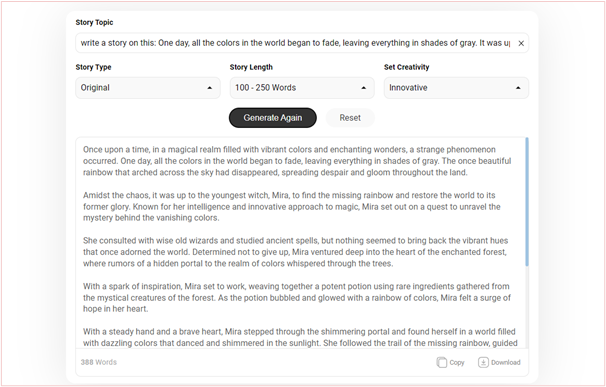

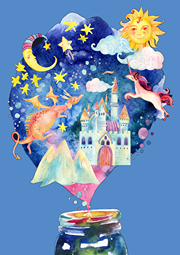
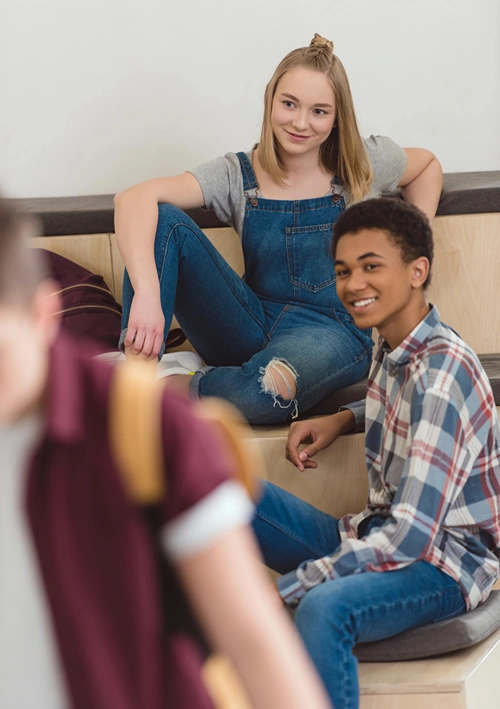

 Begin Now for Free with
Begin Now for Free with 